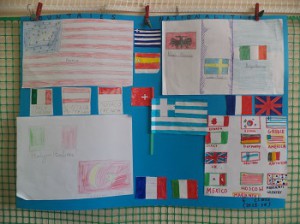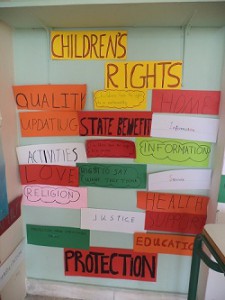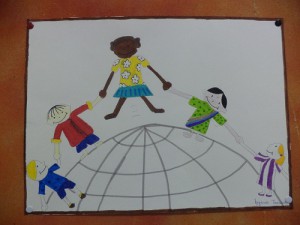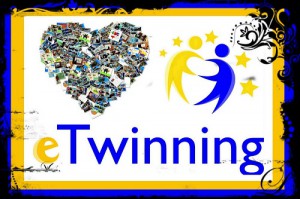“Euro Travel Guide” ή “Ευρωταξιδιωτικός Οδηγός”
Πρόκειται για ένα Σχέδιο Εργασίας τύπου project που υλοποιήθηκε από τους μαθητές της Ε΄Τάξης κατά το σχολικό έτος 2013-14. Στόχευε σε μια πιο κριτική και δημιουργική προσέγγιση της γνώσης που πηγάζει από την εμπειρία που αποκτά ο μαθητής μέσα από τη συμμετοχή του σε μια νοηματοδοτημένη εκπαιδευτική διαδικασία.
Η υλοποίησή του περιλάμβανε την κατασκευή ενός πολιτικού-πολιτισμικού χάρτη της Ευρώπης και τη δημιουργία ενός ψηφιακού ταξιδιωτικού οδηγού με σκοπό την άμβλυνση των πολιτισμικών προκαταλήψεων και την υιοθέτηση προσωπικών θέσεων, αξιών και συμπεριφορών που διαμορφώνουν την ταυτότητα του ενεργού Ευρωπαίου πολίτη.
Το project προέκυψε με αφορμή την ενότητα 1 (Unit 1 – “Internet Friends around Europe”) του βιβλίου των Αγγλικών της Ε΄τάξης. Οι διαθεματικές του προεκτάσεις αφορούν στα γνωστικά αντικείμενα της Ελληνικής γλώσσας, της Γεωγραφίας, της Αγωγής του Πολίτη, της χρήσης ΤΠΕ και των Εικαστικών.
Τα στάδια υλοποίησης ήταν τρία: Αρχικά κατασκευάστηκε ένας εκπαιδευτικός ιστοχώρος (wiki) για να υποστηρίξει το έργο (http://etg20.wikispaces.com/) που παραχωρήθηκε δωρεάν από την εταιρεία wikispaces.com καθώς και ψηφιακά εκπαιδευτικά παιχνίδια με το εργαλείο www.quizlet.com. Σε δεύτερο στάδιο αναζητήθηκε από τους μαθητές πληροφοριακό υλικό από το Διαδίκτυο για την παρουσίαση και ανάδειξη των ιδιαίτερων στοιχείων κάθε χώρας. Στη συνέχεια κάθε μαθητής παρουσίαζε τη συγκεκριμένη χώρα στην ολομέλεια της τάξης στην Αγγλική γλώσσα. Ταυτόχρονα γινόταν η ηχογράφηση της παρουσίασής του και η ανάρτησή της στο wiki του έργου με τη χρήση του διαδικτυακού εργαλείου www.voki.com που παρέχει avatars για την ασφάλεια των παιδιών. Αναρτήθηκε επίσης ένας καμβάς με links από διαδικτυακούς τόπους με ενημερωτικό υλικό και παιχνίδια για την Ευρώπη. Τέλος, κατασκευάστηκε ένας πολιτισμικός χάρτης όπου κάθε μαθητής πρόσθετε εικόνες με τη σημαία της χώρας που είχε αναλάβει και ενός ιδιαίτερου μνημείου ή αξιοθέατου της.
Η αξιολόγηση (Evaluation) των μαθητών βασίστηκε στο διαδικτυακό εργαλείο AnswerGarden.ch και τα σχόλιά τους δημιούργησαν το παρακάτω σύννεφο λέξεων.









